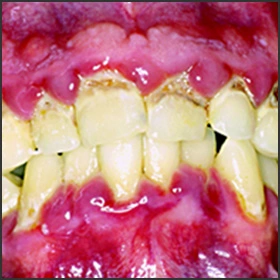Caries Process and Prevention Strategies: The Agent
COURSE NUMBER: 369
Credit Hours:
1 Hour(s)
SHARE
This is part 2 of a 10-part series entitled Caries Process and Prevention Strategies. Dental caries is a multifactorial, infectious disease affecting a significant percentage of the population. This course describes the etiology and pathway...
(Use this feature to create assignments for your students and staff.)
Overview
This is part 2 of a 10-part series entitled Caries Process and Prevention Strategies. Dental caries is a multifactorial, infectious disease affecting a significant percentage of the population. This course describes the etiology and pathways of progression of dental caries, including an in-depth review of the role of dental plaque and oral bacteria.
Dental caries is arguably the most prevalent disease in man, affecting most of the dentate population at some time in their lives. In the United States, dental caries is the most common chronic disease in childhood, with 42% of children between the ages of 2 and 11 having had caries in primary teeth and 23% of children in this same age group having untreated dental caries.1 Among dentate adults aged 20 to 64, 91% have caries in permanent teeth.2 Commonly termed “tooth decay,” caries is the localized destruction of tooth tissues over time by acid that is produced in the mouth when oral bacteria, such as Streptococcus mutans, ferment dietary carbohydrates. These bacteria aggregate in dental plaque that forms on the outer surface of teeth. In a healthy mouth environment, the bacteria that populate plaque are harmless, but when the environment becomes acidic, the population changes to bacteria that thrive in acidity and are linked to caries. A combination of several factors and sub-factors are required for dental caries to develop, including some that are innate to the oral environment, making caries a multifactorial disease that can be difficult to manage and completely prevent. The caries process, the multiple factors that influence caries development, and plaque as a microbial biofilm ecosystem, are discussed.
Clinical Significance Snapshots
Intended Audience:
Dental Assistants, Dental Hygiene Students, Dental Hygienists, Dental Students, Dentists, Dental Assisting Students
Date Course Online:
Dec 8, 2010
Last Revision Date:
Feb 27, 2018
Course Expiration Date:
Feb 26, 2021
Cost:
Free
Method:
Self-instructional
AGD Subject Code(s):
Learning Objectives
Upon the completion of this course, the dental professional should be able to:
Define dental caries.Discuss the medical history of caries along with its natural history.Identify the combination of factors required for caries to develop, and how sub-factors influence this process.Define dental plaque as a microbial biofilm.Describe the development and maturation of dental plaque.Understand the microbial diversity of plaque and recognize it as an ecosystem.Discuss the ecological plaque hypothesis.Name the bacteria associated with caries.Discuss how the acidity in the oral environment is the major determinant of plaque ecology.Identify how bacteria convert dietary carbohydrates to acids.
Disclaimers
Participants must always be aware of the hazards of using limited knowledge in integrating new techniques or procedures into their practice. Only sound evidence-based dentistry should be used in patient therapy. Note: Registration is required to take test.
Submission Information
Recognition
Approved PACE Program Provider
THE PROCTER & GAMBLE COMPANY
Nationally Approved PACE Program Provider for FAGD/MAGD credit.
Approval does not imply acceptance by any regulatory authority or AGD endorsement.
8/1/2021 to 7/31/2027
Provider ID# 211886
(Use this feature to create assignments for your students and staff.)



